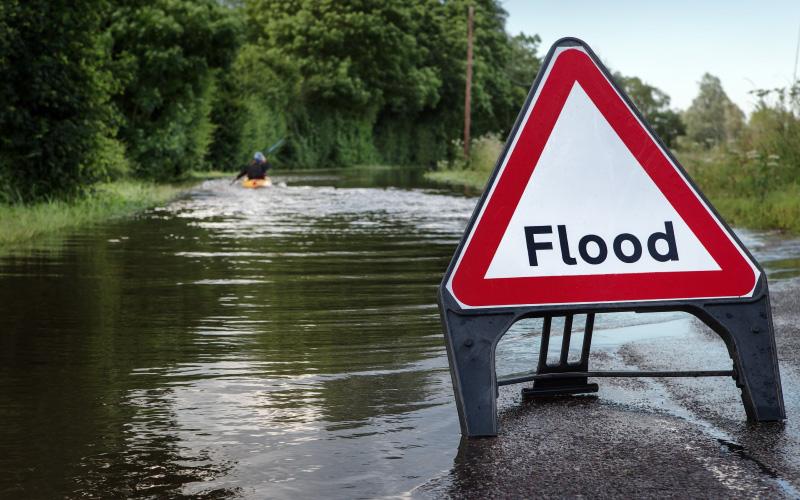
Flooding and the impact on trees
Over the past few days, Storm Henk has caused considerable damage to large areas of the UK. Breaches of rivers, streams and flood defences have caused widespread flooding of the landscape, including parks, gardens and greenspace.
For susceptible trees, flooding events and waterlogging can harm the long-term viability and stability of trees, severely affecting their potential to deliver a range of ecosystem services.
Trees respond to short-term waterlogging events when they are in the leaf by closing stomata, resulting in reduced rates of transpiration and photosynthesis.
Over longer periods, such as during periods of flooding, the supply of oxygen to tree roots may be reduced, which prevents normal function in absorbing water and nutrients. Prolonged periods may result in further reduction of root function, resulting in roots dying and potentially allowing rot or decay. Damage to roots increases the risk of windthrow due to reduced tree stability and anchorage.
Prolonged waterlogging doesn't just impact the roots but also takes a toll on the visible parts of the plant, causing damage to leaves and stems while increasing susceptibility to pathogens. This can lead to crown dieback and, ultimately, the death of the plant.
Fortunately, for trees affected by the recent flooding from Storm Henk, the damage from waterlogging is notably less severe in winter compared to warmer seasons. Survival rates drop significantly for trees facing prolonged waterlogging in the summer.
The response to waterlogging and the speed of recovery vary among tree species. However, past research on the impact of climate change on tree populations has predominantly focused on drought resistance. Historically, drought has been considered the primary constraint for tree growth and vitality, especially in urban areas.
Recent events (and predictions for wetter winters) have taught us this is a critical knowledge gap, since waterlogging tolerance can be fundamental for the survival and long-term vitality of trees and plants in areas likely to flood.
Researchers suggest specifiers should now include waterlogging tolerance as a selection criterion for urban trees and plants. This approach would help ensure the chosen species are capable of enduring the expected exposure to flooding events and can continue to deliver ecosystem services both during a flooding event and in the immediate aftermath.
Challenges of Specifying Tolerant Species:
- Difficulty in specifying species tolerant to both flooding and drought
- Research indicates a limited number of tree species tolerant to both stresses
- Few species exhibit tolerance to shade, drought, and flooding simultaneously
- Most websites list either drought-tolerant or flood-tolerant species, but rarely both
Traditionally, trees planted in less-than-perfect locations (for example, in terms of position and soil type) have survived in the UK, due to the mild temperate nature of the UK climate. Climate change is likely to affect this, as extreme drought and flooding events place trees at greater stress.
Researchers acknowledge that, due to their long-lived nature, climate change is likely to place pressure on existing, native trees, as seasonal weather patterns gradually change throughout the life of the tree.
Further reading

